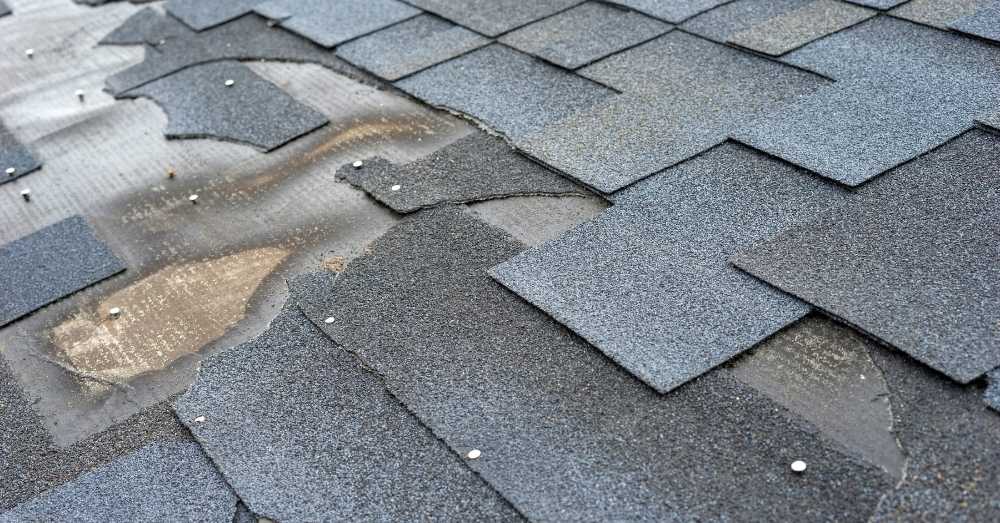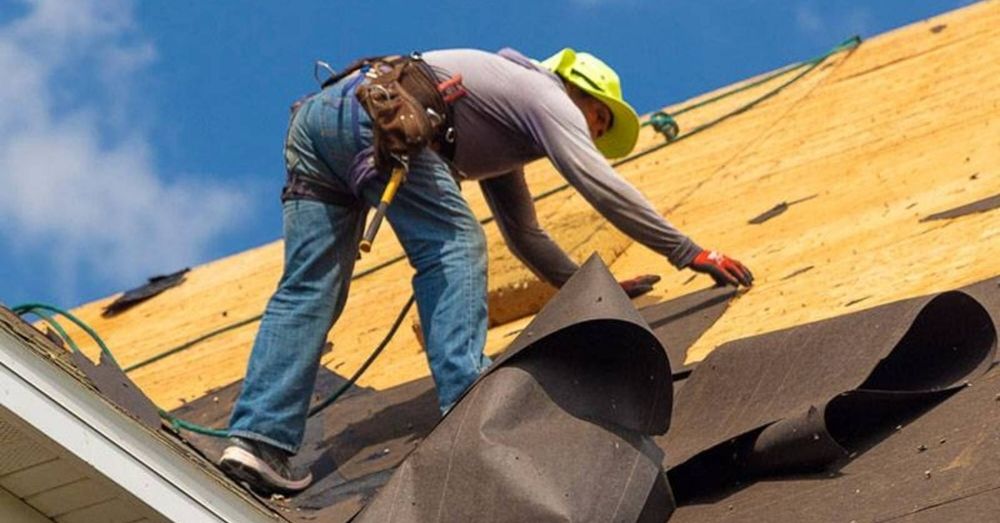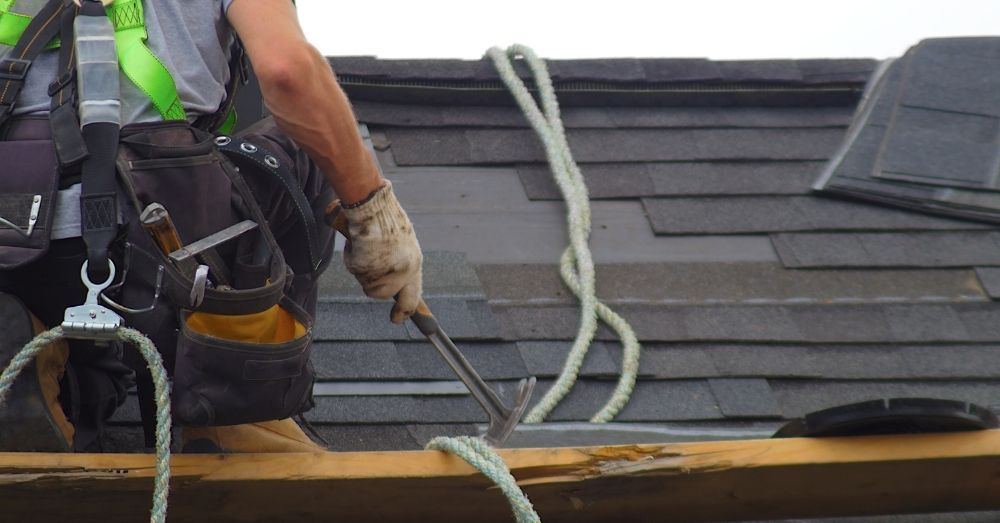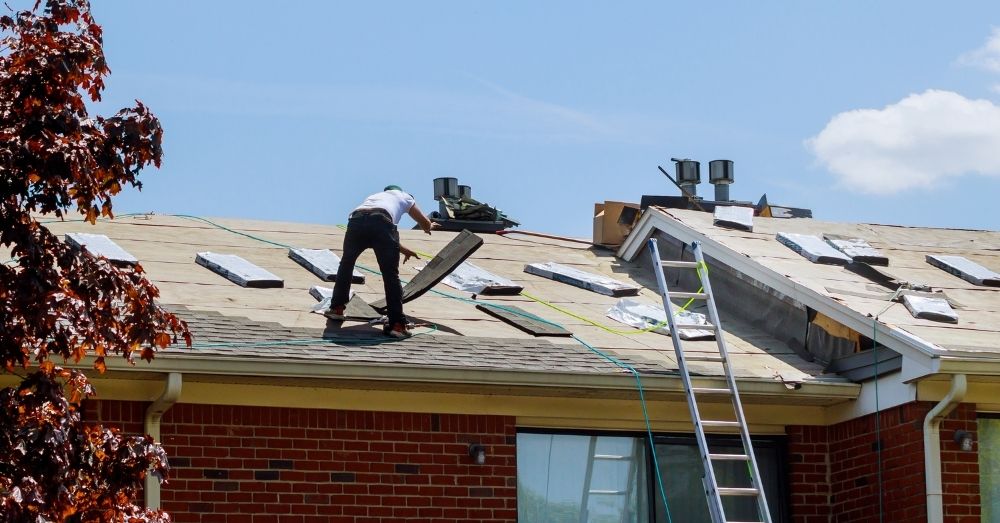
When it comes to protecting your home, your roof is the first line of defense against the elements. But even the strongest roofing systems aren’t immune to damage. A sudden storm, unnoticed wear and tear, or years of neglect can quickly lead to urgent issues. The problem? Roof damage often starts small and escalates into costly emergencies if ignored.
This is where awareness makes all the difference. Knowing the warning signs that call for emergency roof repair services can save you from major property damage and expensive repairs.
Table of Contents
Key Takeaways
✔ Even small roof leaks can spread quickly, damaging insulation, walls, and wiring, so they should be addressed immediately.
✔ Damaged shingles expose your home to water intrusion and should be replaced before leaks and mold develop.
✔ A sagging roof signals structural weakness that could lead to collapse if not repaired right away.
✔ If sunlight can pass through your attic, so can water and pests, making prompt repair essential.
✔ Excessive granule loss and blocked gutters accelerate roof deterioration and increase the risk of leaks.
✔ Failing flashing creates direct pathways for water to enter your home, often resulting in interior leaks.
✔ Standing water adds stress, promotes algae growth, and will eventually cause roof membranes to fail.
✔ Hail, wind, or falling debris can weaken your roof immediately, so it’s vital to inspect and repair after severe weather.

8 Key Warning Signs You Should Never Ignore
1. Persistent or Sudden Leaks
Leaks are one of the most urgent issues a homeowner can face, and ignoring them leads to widespread interior damage.
What to Watch For
- Water stains on ceilings and walls: Circular brown marks usually mean water has been seeping in for some time. These stains often spread outwards, signaling that the leak is worsening and could eventually damage drywall or paint finishes.
- Dripping water during storms: Even a slow drip is proof that water has found a direct path through the roof. Left unchecked, it can weaken the ceiling structure and damage electrical wiring hidden inside the walls.
- Damp insulation in the attic: Wet insulation clumps together, loses its ability to insulate properly, and takes a long time to dry. This dampness creates the perfect environment for mold, which can spread quickly throughout the home.
2. Missing, Broken, or Curling Shingles
Shingles are designed to shield your roof from weather. When they fail, your home is left exposed to the elements.
Signs of Trouble
- Shingles missing after a storm: Gaps in coverage allow rainwater to hit the underlayment directly, which accelerates roof deterioration and increases the chance of leaks forming in multiple spots.
- Edges curling upward or buckling: Curled shingles no longer lay flat, creating channels where wind-driven rain can easily slip beneath the roofing surface. Over time, this leads to interior water damage and mold growth.
- Cracks or visible patches: Shingles that are cracked or patched over lose their protective function. Cracks can spread across the roofline, allowing water infiltration across a wider area.
3. Sagging Roof Structure
A sagging roof is one of the most dangerous warning signs because it points to structural weakness.
Potential Causes
- Long-term water damage: Decking that has been exposed to repeated moisture loses its strength and starts to dip. This damage often remains hidden until the sagging becomes visible.
- Rotting beams or trusses: Once wood rot takes hold, the load-bearing supports of your roof are compromised. A weakened structure not only threatens the roof but also the safety of everyone inside.
- Poor construction or excess weight: If the roof wasn’t built to code or has been carrying too much snow or heavy material, it can gradually bow downward. This stress builds over time and may lead to collapse.

4. Light Shining Through the Attic
The attic should be dark and sealed. Any sunlight coming through is an immediate red flag.
Check For
- Sunlight peeking through boards: Light means gaps are present, and where light enters, rainwater and insects can as well. These gaps usually grow larger over time.
- Drafts during windy days: Feeling air move through the attic indicates cracks or separations in the roof deck, which can easily turn into water leaks during a storm.
- Holes or cracks in decking: Even small punctures eventually allow significant water to seep inside. The longer these go unrepaired, the more damage accumulates to insulation, wood, and electrical systems.
5. Granule Loss and Clogged Gutters
Shingle granules are more than surface grit—they extend the roof’s lifespan. Too much loss is a major red flag.
Why It Matters
- Excess granules in gutters: Finding piles of granules in gutters or downspouts shows that shingles are wearing out. Without their protective coating, shingles age rapidly and crack under the sun.
- Clogged gutters filled with roof debris: Gutters that can’t drain force water to back up under shingles, leading to leaks near the roofline and fascia boards. This type of water damage can spread quickly.
- Bare or shiny shingle patches: Shingles with visible asphalt or bald spots have lost their ability to resist UV damage. They become brittle, break more easily, and fail to keep water out.
6. Damaged Flashing Around Chimneys, Vents, and Skylights
Flashing protects the most vulnerable areas of your roof. Once it’s compromised, leaks often appear soon after.
Common Issues
- Rusted flashing near chimneys: Corrosion creates pinholes that let water in around chimney bases. These leaks often drip straight into living spaces below.
- Cracked or dried seals around skylights: As sealant wears down, rainwater can seep between the skylight and roof opening, often dripping directly into rooms.
- Loose flashing after storms: High winds or impact damage can shift flashing out of place. Even a slight gap provides a direct entry point for water.
7. Ponding Water on Flat Roofs
Flat roofs must drain effectively. Standing water is a clear sign something isn’t working.
Risks of Ponding Water
- Stress on roofing materials: Pooled water adds weight and pressure, weakening roof membranes and seams. Over time, this can cause the roof surface to sag or crack.
- Leaks forming over time: Water that sits for days eventually finds its way into tiny gaps and seams. This often leads to hidden leaks that go unnoticed until significant interior damage occurs.
- Algae and moss growth: Moist surfaces encourage vegetation to grow, which further weakens materials and clogs drains, making the ponding problem even worse.
8. Storm and Impact Damage
Severe weather can leave behind visible and hidden damage that needs immediate inspection.
What to Look For After a Storm
- Hail dents or punctures: These may seem cosmetic but weaken the shingle surface, making it more prone to cracking and early failure.
- Branches or debris striking the roof: Even small punctures from branches can allow water to enter and spread inside walls or ceilings.
- Loose or torn materials: Wind often lifts shingles or flashing out of place, leaving entire sections of the roof unprotected.
What To Do Immediately If You Notice a Warning Sign
If you suspect a roofing emergency, taking the right steps quickly can make the difference between minor damage and a full replacement. Acting with caution and purpose keeps your home safe and minimizes repair costs. In fact, repairing a roof costs the average U.S. homeowner about $1,153, which is far less than the expense of major structural repairs or a complete replacement if the issue is left unresolved.
Safety First
Protecting your family should always be the top priority.
- Evacuate unsafe rooms: If you see water dripping onto ceilings or walls, leave those areas immediately to avoid potential ceiling collapse. Knowing when you should call for emergency roof services often starts with recognizing these unsafe conditions.
- Avoid electrical hazards from water exposure: Never touch wet electrical outlets, wires, or appliances near a leak. This type of situation requires urgent professional help through emergency roof repair services to eliminate the risk.
- Stay clear of falling debris: Storms may loosen shingles or tiles, and pieces of roofing can drop unexpectedly. Calling for emergency roof services ensures the area is secured and safe for re-entry.
Temporary Fixes
While waiting for professional help, small steps can prevent further water damage.
- Place buckets to collect dripping water: This reduces damage to floors and furniture while you wait for emergency roof repair services to arrive.
- Use tarps or plastic sheets to cover leaks: A properly secured tarp can temporarily block rainwater and stop leaks from spreading indoors. If you are unsure when you should call for emergency roof services, covering leaks immediately buys time until help comes.
- Clear debris if safe to do so: Removing small branches or leaves from the roof or gutters can improve drainage. For larger hazards, it is best to leave the task to experts who provide emergency roof services.
Call a Professional
Temporary steps help, but professional assistance is what restores safety and prevents escalating damage.
- Contact a roofing contractor specializing in emergencies: Professionals offering emergency roof repair services arrive equipped to stabilize leaks, secure weak areas, and provide long-term solutions.
- Ask about availability and response time: Many companies offer 24/7 support, but confirming availability ensures you’re not left unprotected. If you’re asking yourself when you should call for emergency roof services, the answer is the moment you spot active leaks or structural issues.
- Expect both temporary and permanent solutions: Roofers providing emergency roof services often start with quick fixes to stop water intrusion, then follow up with a plan for permanent repairs or replacement.

When Should You Call for Emergency Roof Services?
This supplementary section helps homeowners know exactly when to act and how to separate urgent issues from those that can wait.
Immediate Situations
Certain roofing problems cannot wait and demand professional attention right away.
- Active leaks during storms: Water dripping inside your home can quickly spread to walls, ceilings, and electrical systems. This is a clear case where emergency roof repair services are needed to stop the damage.
- Storm damage from hail, falling trees, or flying debris: Impact damage often creates hidden punctures or tears in roofing materials. If you’re wondering when you should call for emergency roof services, storm damage is always a reason to act immediately.
- Fire or sudden impact damage: Fires weaken structural supports, while heavy debris can break through the roof. Both situations require urgent help from emergency roof repair services before the damage spreads further.
When It Can Wait
Not every roofing issue needs immediate intervention. Some can be scheduled for normal repair appointments.
- Cosmetic shingle replacements: A few missing or cracked shingles may not cause immediate leaks, so repairs can wait a few days. For permanent solutions, schedule emergency roof repair services only if leaks begin.
- Scheduled gutter cleanings: Leaves and debris in gutters should be cleared, but this is generally not urgent unless water is already backing up. If you’re unsure when you should call for emergency roof services, this type of maintenance is typically safe to delay.
- Minor flashing wear and tear: Small cracks around vents or skylights may not leak immediately but should be addressed soon. Regular roofing contractors can handle these, while emergency roof services are best reserved for larger failures.
Why Quick Response Matters
Even if the problem looks small, waiting too long can multiply costs and risks.
- Damage spreads quickly: A minor leak can ruin insulation, drywall, and wood framing in just a few hours. Acting quickly with emergency roof repair services saves money long term.
- Safety risks escalate: Sagging roofs or water near wiring can create hazards for your family. This is why homeowners must know when you should call for emergency roof services and not delay.
- Prevents risks of injuries: Apart from family member’s health, it’s also worth remembering that roofing can be dangerous work—nearly half of contractor injuries are fractures and about 15% are concussions, most often during small residential repairs—so leaving the job to trained professionals ensures the work is done safely and correctly.

How to Prepare for Emergency Roof Services
When a roofing emergency strikes, preparation can make the repair process smoother, safer, and faster. By knowing what steps to take before contractors arrive, you’ll minimize damage and help ensure repairs are handled efficiently.
1. Secure the Area
Before help arrives, your priority is to protect your home and family. Move furniture, electronics, and valuables away from leaking areas to prevent further damage. Just as important, keep children and pets out of rooms with ceiling leaks or sagging areas, as falling debris can be hazardous. Taking these quick steps makes it easier for emergency roof repair services to address the problem efficiently once they arrive.
2. Provide Access for Contractors
Roofing crews need clear access to your property to begin work quickly. Unlock gates and doors so they can move equipment without delays, and park vehicles away from the driveway to leave space for ladders and trucks. It’s also a good idea to move patio furniture, grills, or toys away from the perimeter of your house. A clear work zone ensures that emergency roof services can be completed faster and with less risk of accidents or disruptions.
3. Document the Damage
Before repairs begin, take photos and videos of leaks, stains, and any visible roof damage. These records are crucial when filing insurance claims and prove the extent of the problem. Write down when you first noticed signs of damage, such as a leak during a storm or visible sagging, as a timeline strengthens your claim.
4. Communicate with Your Roofing Contractor
Clear communication with your contractor ensures that you know what to expect from start to finish. Explain what you’ve observed, from water stains to noises in the attic, so the crew can arrive prepared. Ask about temporary solutions, such as tarping, and how they plan to handle permanent repairs. This gives you peace of mind while emergency roof repair services are underway. You should also clarify whether the contractor can help with insurance paperwork, since many companies offer guidance through the claims process.

Frequently Asked Questions (FAQs)
You should never leave a leaking roof unattended, even for a short period. A minor leak can spread quickly, soaking insulation, weakening wood framing, and damaging drywall within hours or days. The longer water intrusion continues, the more expensive and complex the repairs become. Acting immediately protects your home and helps prevent the need for full roof replacement.
Ignoring a roof leak allows water to seep deeper into your home’s structure. Over time, this can lead to rotting wood, mold growth, electrical hazards, and even ceiling collapse. What starts as a small repair could escalate into thousands of dollars in damage. A leak is never just a cosmetic issue—it is a direct threat to the safety and value of your property.
The most economical short-term solution is using a heavy-duty tarp to cover the damaged area. This helps block rainwater and limits interior damage until permanent repairs can be made. However, tarps are only temporary and can fail under prolonged exposure to wind and rain. The true cost-effective option is to repair or replace damaged roofing materials promptly before the damage spreads.
If shingles are missing, inspect the area as soon as possible to see if the underlayment is exposed. Temporary coverage with roofing cement or a tarp can help until professional repairs are scheduled. Missing shingles leave your roof vulnerable to leaks, so arranging a replacement through a qualified roofer is the safest step. Even a few shingles lost in a storm can lead to widespread damage if left unaddressed.
Shingles cannot repair themselves once they are cracked, curled, or missing. Roofing materials are designed to provide a protective barrier, and once that barrier is compromised, it only deteriorates further. Hoping shingles will “heal” on their own will only allow more water to enter and cause bigger issues. The only solution is repair or replacement by a roofing professional.
One Leak Can Cost Thousands—Call Lyndsey Roofing Now!
Roofing problems rarely fix themselves, and the longer they go unnoticed, the greater the damage becomes. At Lyndsey Roofing®, LLC in Poughkeepsie, NY, we understand that emergencies demand both speed and quality. Whether it’s a sudden leak, storm damage, or another urgent roofing issue, our crew is ready to respond. Don’t let small issues grow into costly disasters—trust Lyndsey Roofing® to deliver the emergency roof repair services you need with professionalism and care.
Call Lyndsey Roofing, LLC today to schedule your emergency roof inspection and secure your home before the next storm hits!







